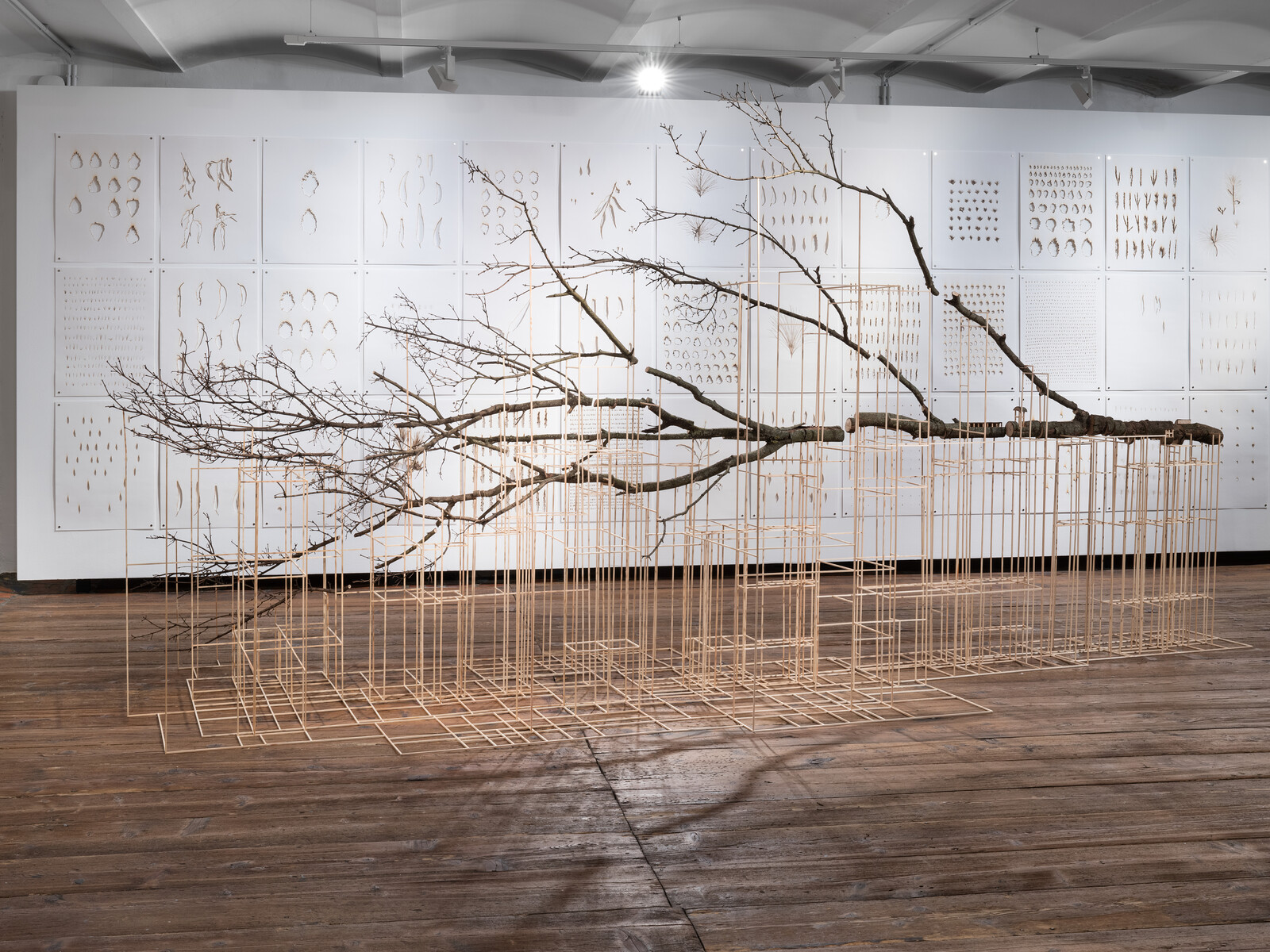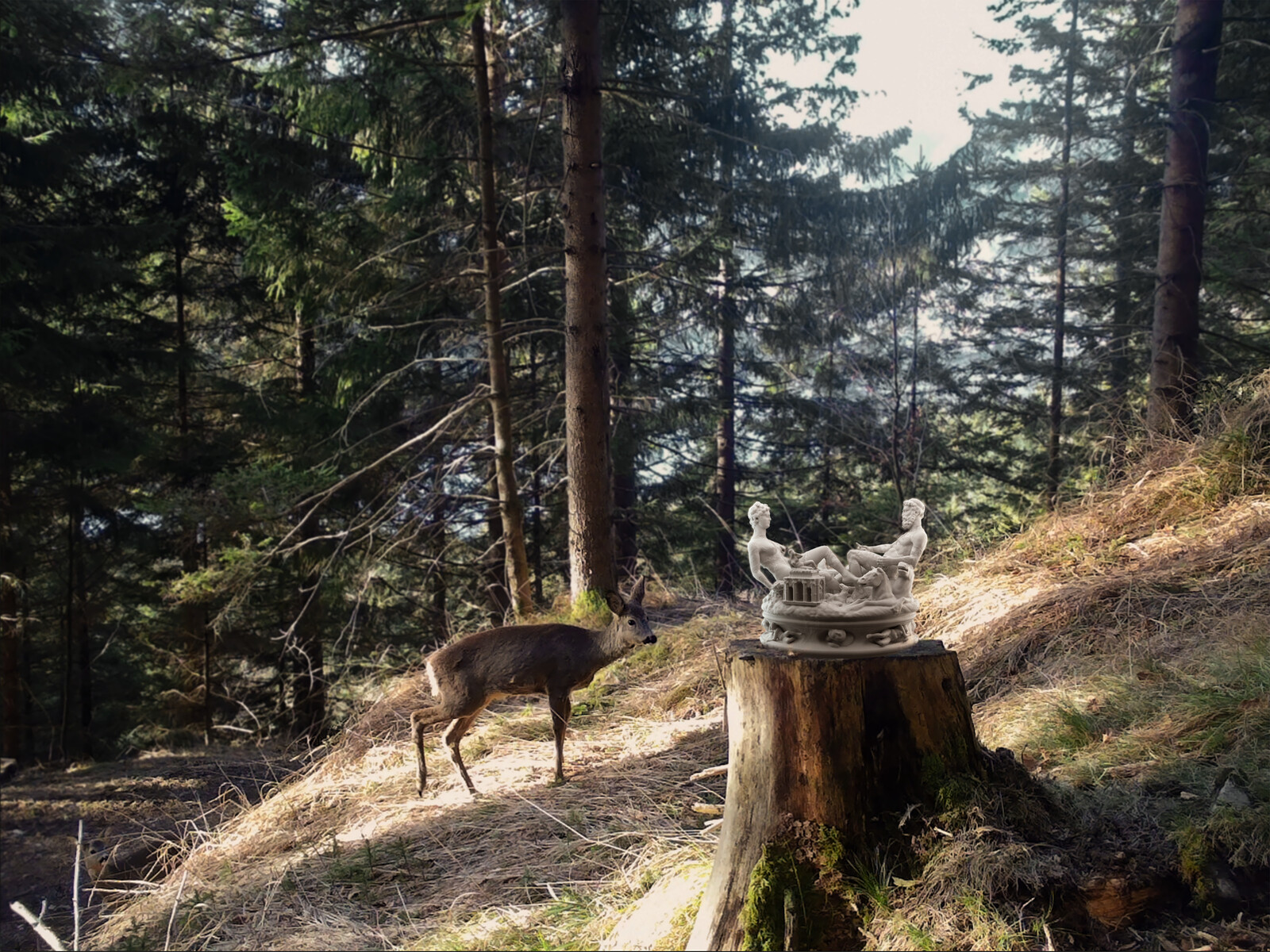Klima Biennale Wien: 100 days, 100 partners, 1 vision
April 5–July 14, 2024
With the vision and innovative power of art, the Klima Biennale Wien spurs the paradigm shift toward a liveable and sustainable future on our planet. The key tools to achieve this objective are, without doubt, participation, collaboration, and awareness. The Biennale will stake out viable responses to the climate crisis together with the people of Vienna.
In its exhibitions, in public spaces or as part of the festival program, the Klima Biennale Wien brings together current positions from the fields of international contemporary art, design, architecture and science that point the way to socially and ecologically just world relations. Based on the principles of care and sustainability, the Biennale proposes concrete alternatives by questioning turbo-capitalist concepts and overcoming patriarchal and colonial paradigms in favour of collective, inclusive and common-good strategies.
The first event of its kind, Klima Biennale Wien is directed by Claudius Schulze and Sithara Pathirana.
It is initiated by the KunstHausWien and its director Gerlinde Riedl and supported by the city departments of Climate, Culture and Business of the City of Vienna.
Into the Woods: Perspectives on Forest Ecosystems
At the Biennale Zentrale at KunstHausWien
How we deal with the forests of our Earth falls back on us! Because the forest as a natural ecosystem is indispensable for combating the ecological crisis and for preserving the biodiversity, on which all life depends. The group exhibition Into the Woods, curated by Sophie Haslinger at the Biennale Zentrale in KunstHausWien, is an attempt to approach the forest system with the means of art. Sixteen artistic positions explore various forest systems of the Earth—from the Amazon rainforest to the Embobut forest in Kenya and the primeval forests of the Carpathians to the Hambacher Forst and the alluvial forest in the Vienna Prater. They use a wide range of materials and methods.
For example, Richard Mosse has used multispectral cameras and geographic information systems (GIS) for his series of large-format photographs on the effects of ecocide in the Brazilian Amazon region (Tristes Tropiques, 2020/21). Alma Heikkilä’s work, not visible or recognizable in any form, takes a macro perspective and makes visible the abundance of life that teems beneath the surface of the Earth. Diana Scherer uses the intelligence of plants to grow structures from root tissue. Her work created especially for the exhibition (from Interwoven, 2024) also symbolizes the gigantic mycorrhizal networks in the forest floor.
The works, which are research-based, inspiring, poetic, and often developed in cooperation with scientists, make the complex topic tangible and enable new perspectives on an ecosystem that is supposedly so familiar to us.
Participating artists: Rodrigo Arteaga, Anca Benera & Arnold Estefán, Eline Benjaminsen & Elias Kimaiyo, Alma Heikkilä, Monica Ursina Jäger, Markus Jeschaunig, Isa Klee, Susanne Kriemann, Jeewi Lee, Antje Majewski, Richard Mosse, Katie Paterson, Oliver Ressler, Abel Rodríguez, Diana Scherer, Rasa Šmite & Raitis Šmits.
Festival highlights
The Biennale presents more than 20 exhibition accross the city’s art institutions. At the Biennale Festivalareal, the show Songs for the Changing Seasons, curated by Lucia Pietroiusti and Filipa Ramos, brings together artists whose works generate proposals and gestures of environmental attunement. By considering forms of love, attention, repair, humility and preparation, the artworks address where, when and how planetary transformation is experienced. Participating artists: Yussef Agbo-Ola/Olaniyi Studio, Cooking Sections, Patricia Domínguez, Eva Fàbregas, Sofia Jernberg, Joan Jonas, Dominique Knowles, Lin May Saeed, Natalia Montoya, Thao Nguyen Phan, Laure Prouvost, Studio Ossidiana, Adrián Villar Rojas
With Beate Gütschow’s Resistance, Flood, Fire, Resistance. and Laure Winant’s From a Tongue We Are Losing, the Foto Arsenal Wien is presenting two exhibitions. At the Belvedere 21, Angelika Loderer’s Soil Fictions and Oliver Ressler’s Dog Days Bite Back are concerned with the impacts of the climate crisis. The Weltmuseum Wien is showing Unknown Artists of the Amazon and the Künstlerhaus Vereinigung will show Kubus III with works by Michael Goldgruber and Markus Guschelbauer (curated by Anke Armandi, Maria Grün and Lena Knilli). With the exhibition Vanishing Structures, the Kunsthalle Exnergasse examines the questions tied to the disappearance of architecture, landscapes, people and traditions. In collaboration with the Wiener Festwochen, the Kunsthalle Wien will explore the relationship between social and political movements and the universe and the sun. The MAK will show a new immersive spatial installation by the artist collective Troika (Eva Rucki, Conny Freyer, and Sebastian Noel), focusing on the complex forms of non-human intelligence. Among others, the Academy of Fine Arts and the University of Applied Arts Vienna, the Architekturzentrum Wien, the MuseumsQuartier Wien will constitute a vital part of the festival by hosting events and projects. In cooperation with the Wiener Festwochen and the Austrian Museum of Folk Life and Folk Art / Volkskunde Museum Wien, the Klima Biennale Wien will offer free spaces for activist groups: As safe spaces, the Aktivismus Camp will offer retreats and opportunities to network, helping support everyday activism.
In a world where economic growth is often regarded as the ultimate goal, the climate crisis is challenging this paradigm: How can a livable, climate-fit future be achieved? How do we negotiate the related needs? How can abstract global relationships become easier to understand?
The Klima Biennale Wien faces the challenge of making the highly complex and acute issues of global change, the climate crisis, species extinction, and the impacts on the human-nature fabric visible and tangible for everyone: because we urgently need to find new ways of sharing knowledge and discussing strategies together!




